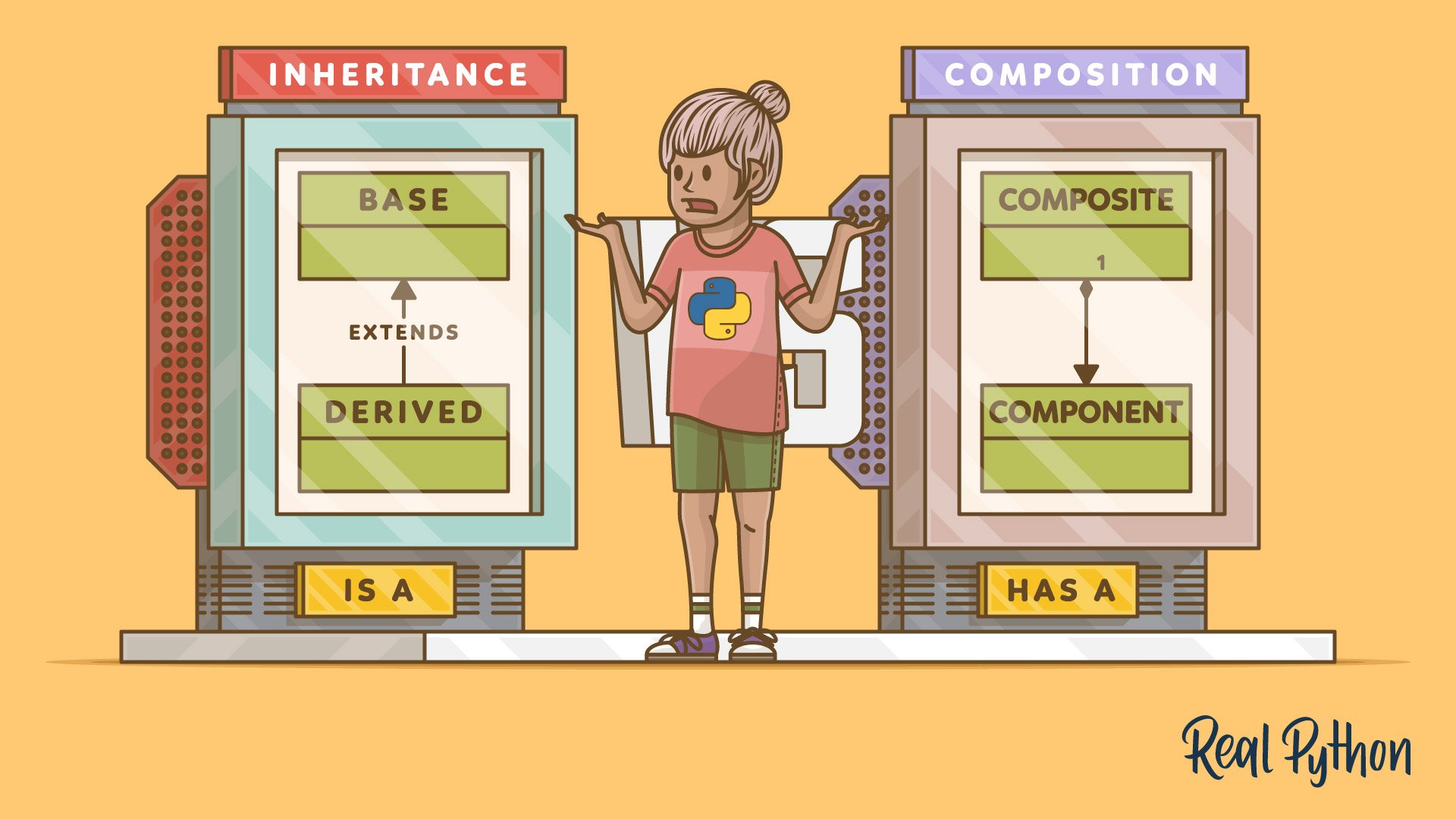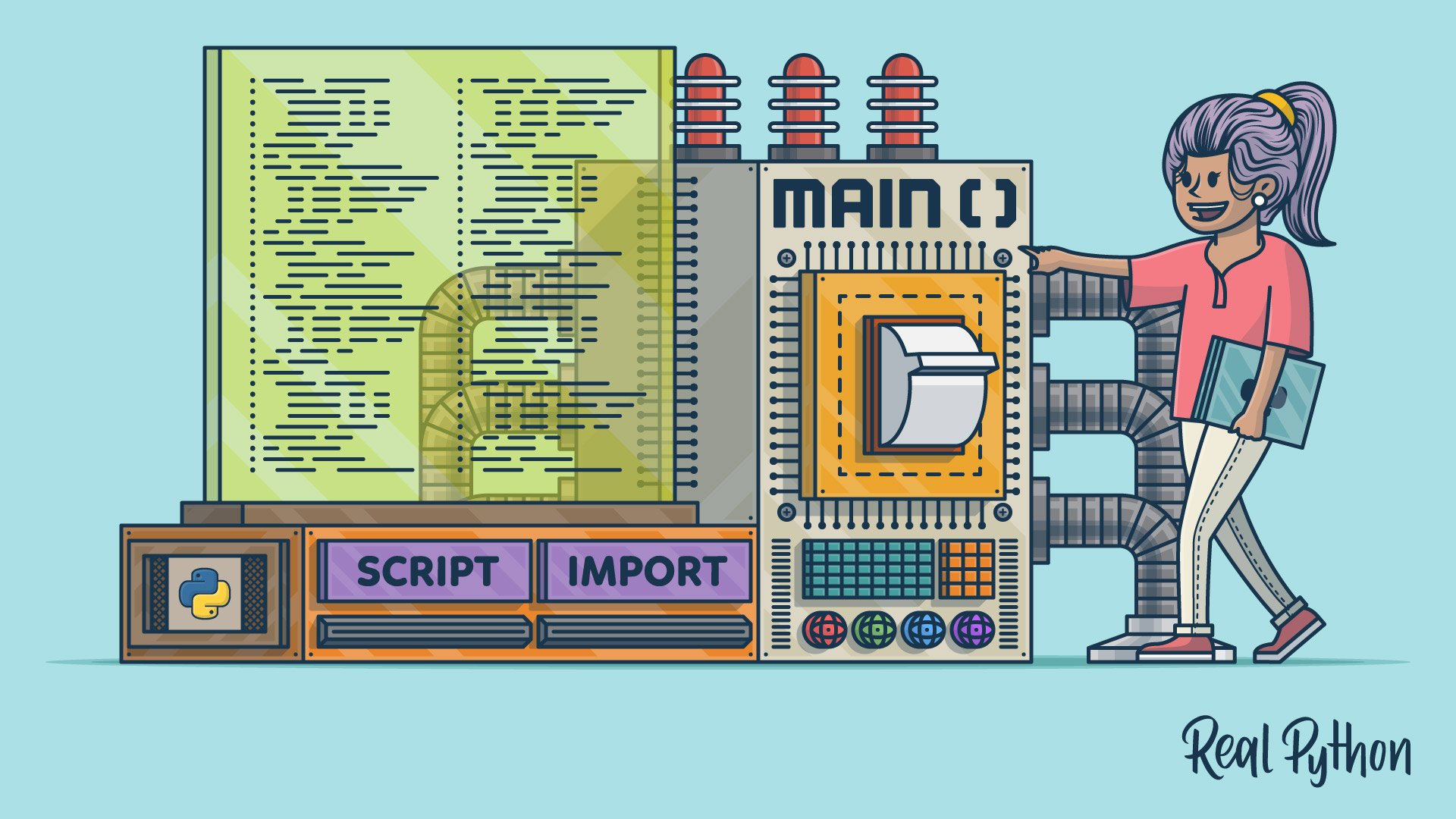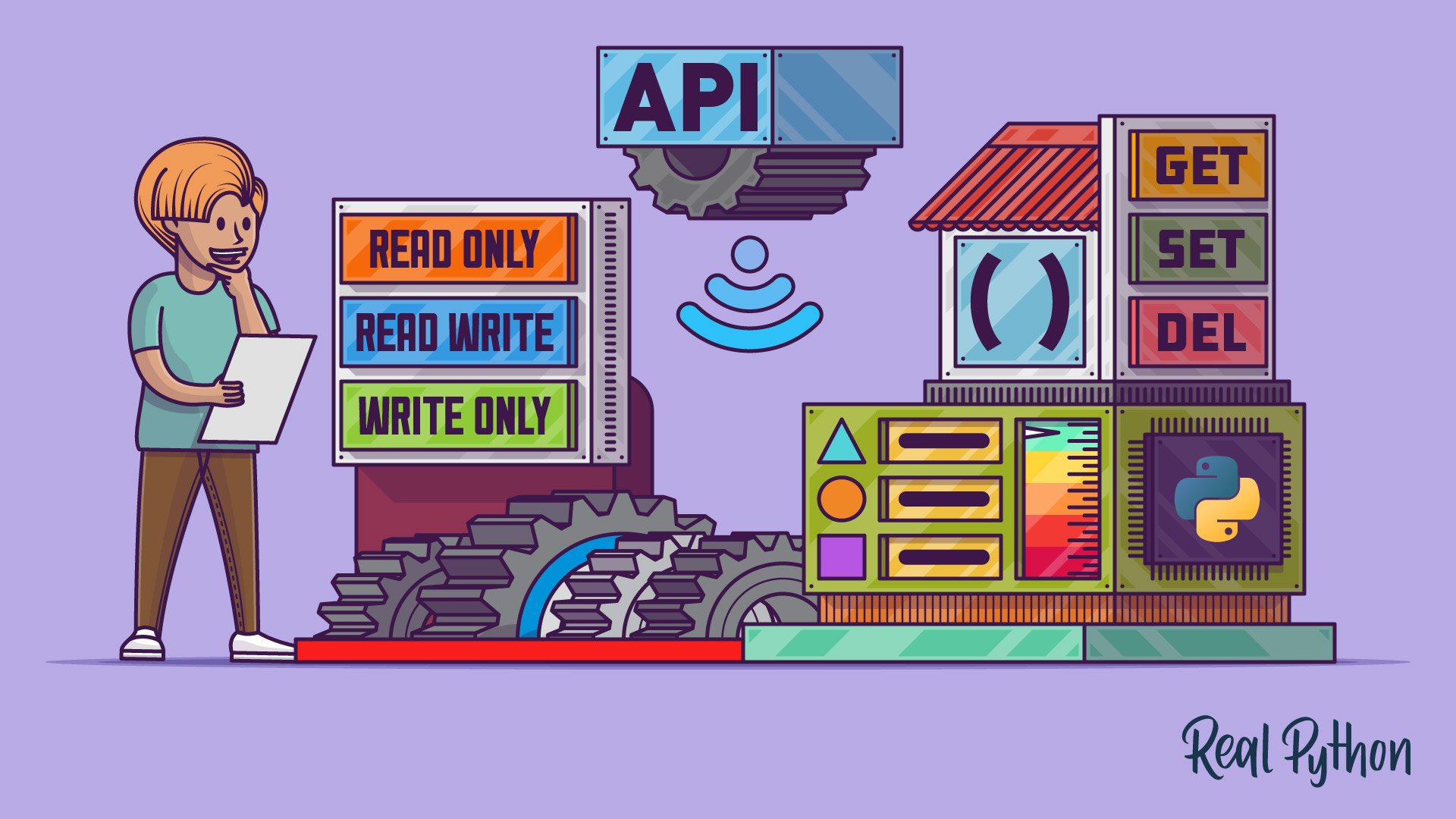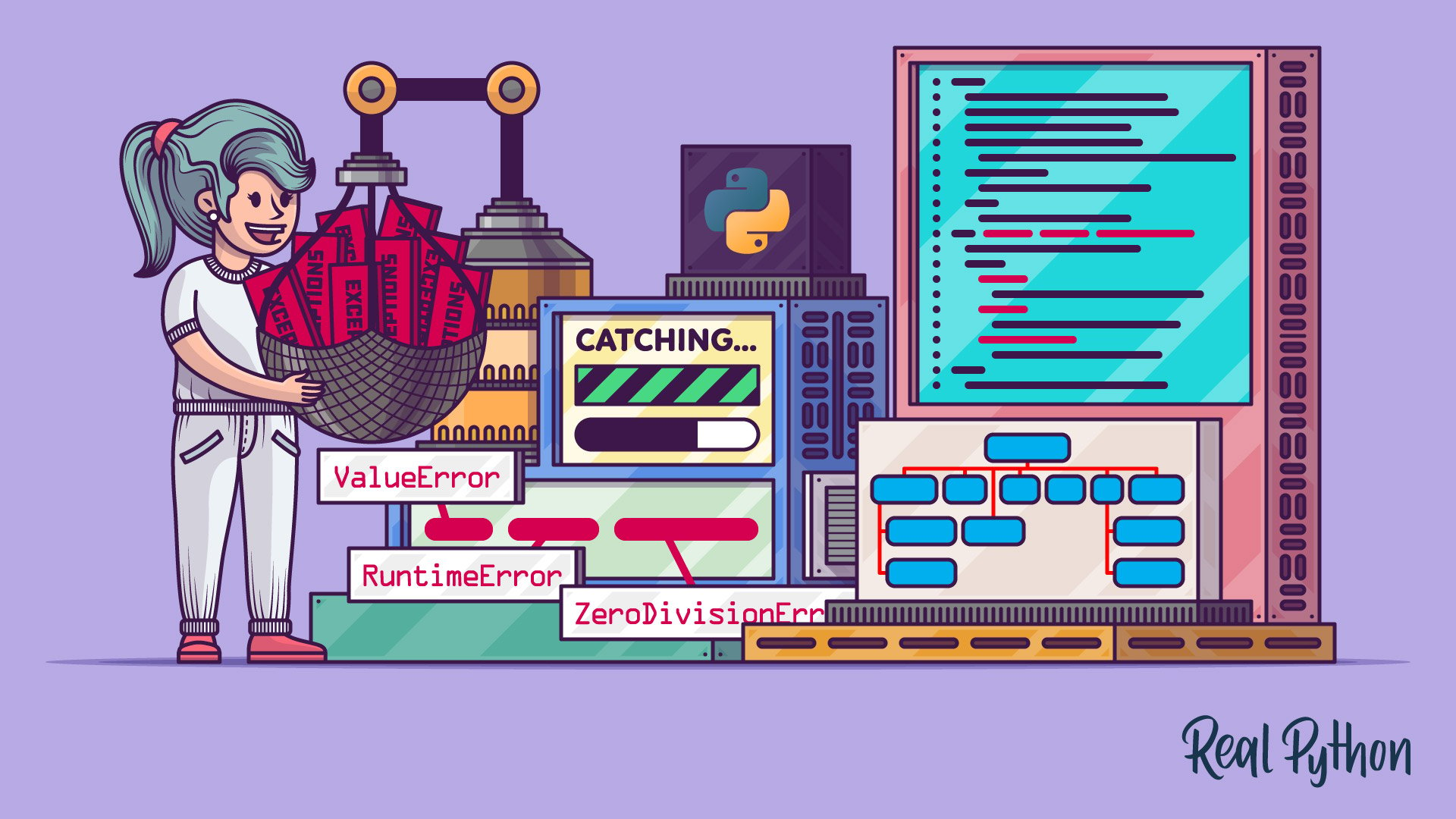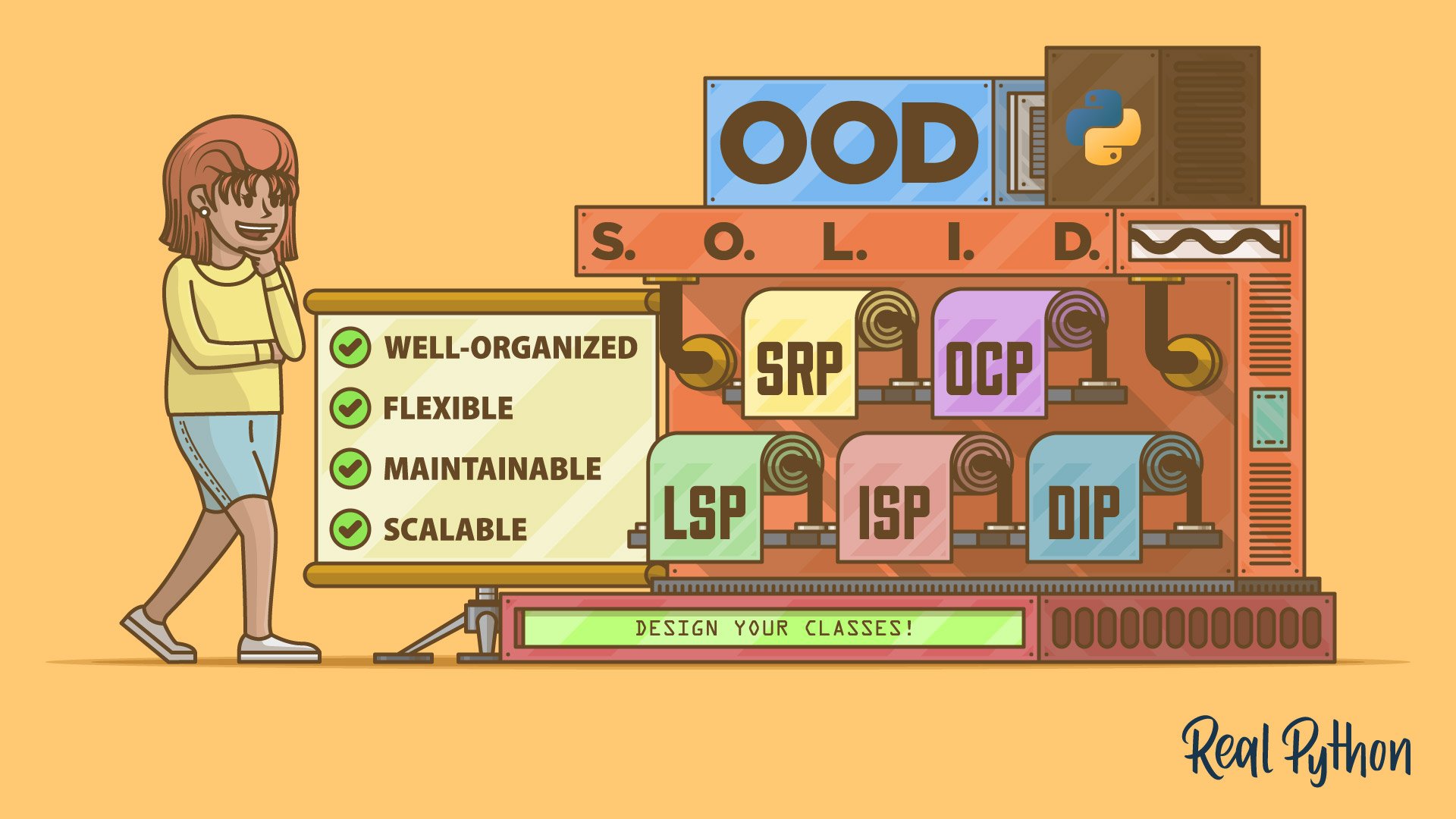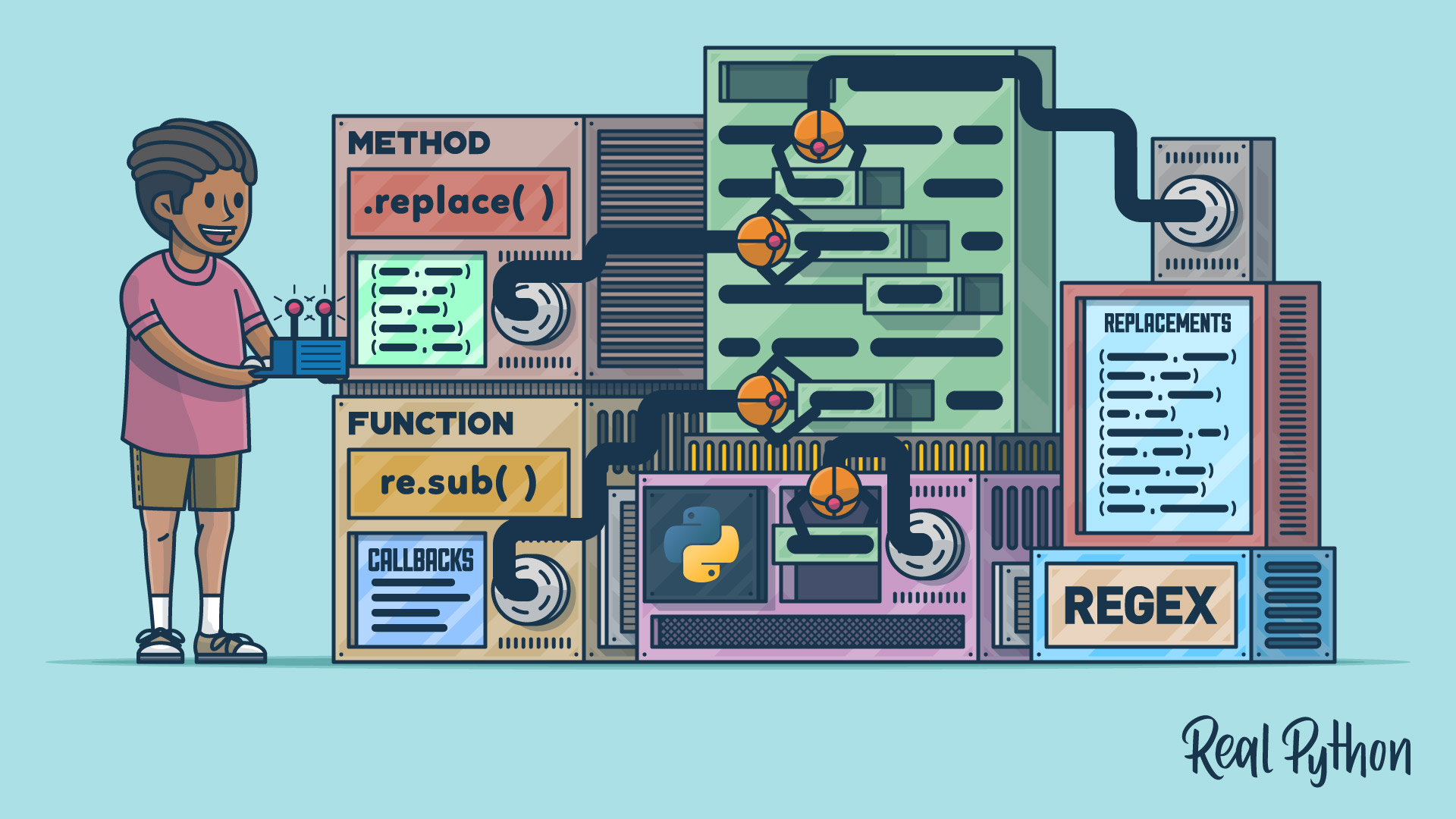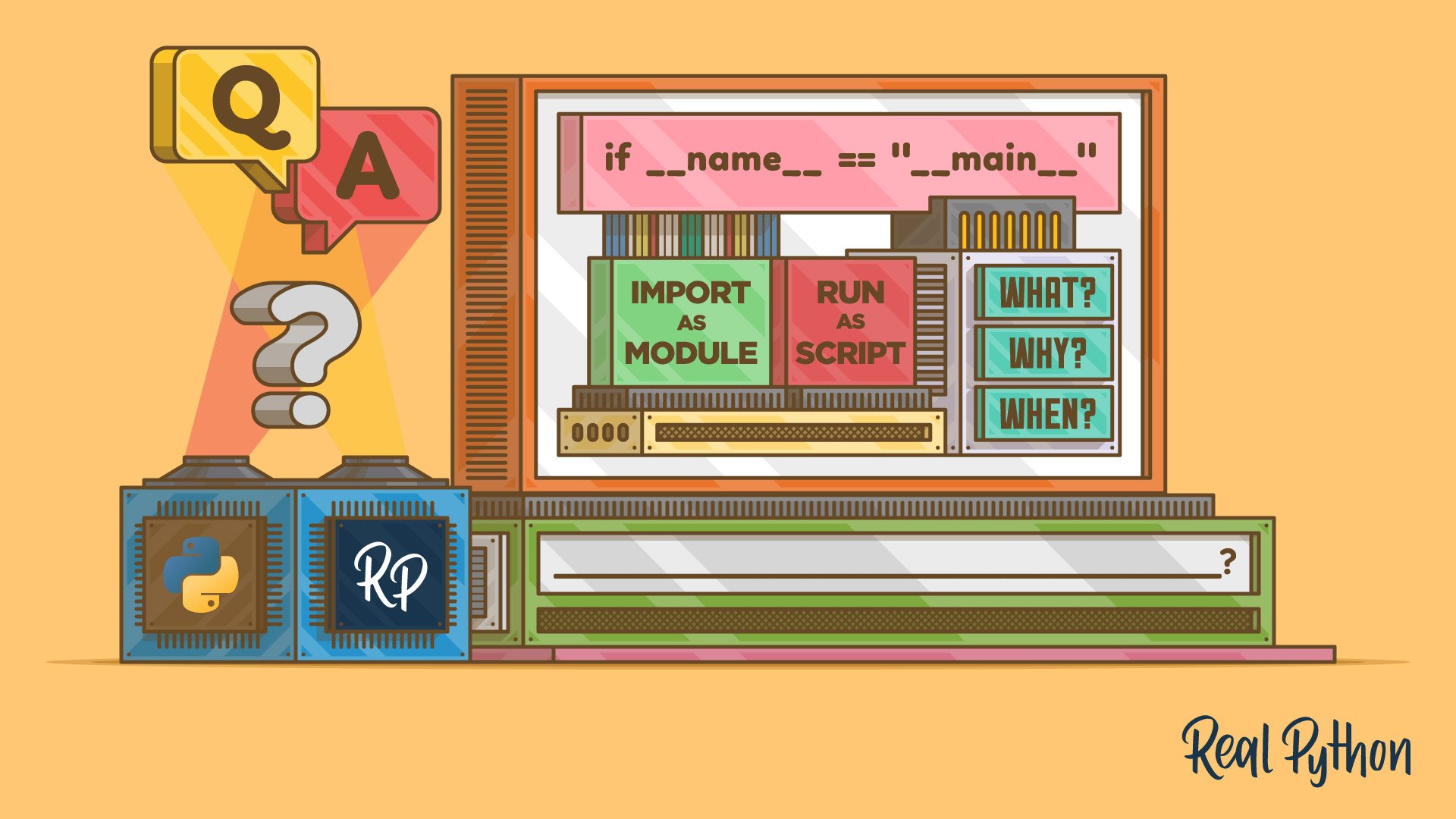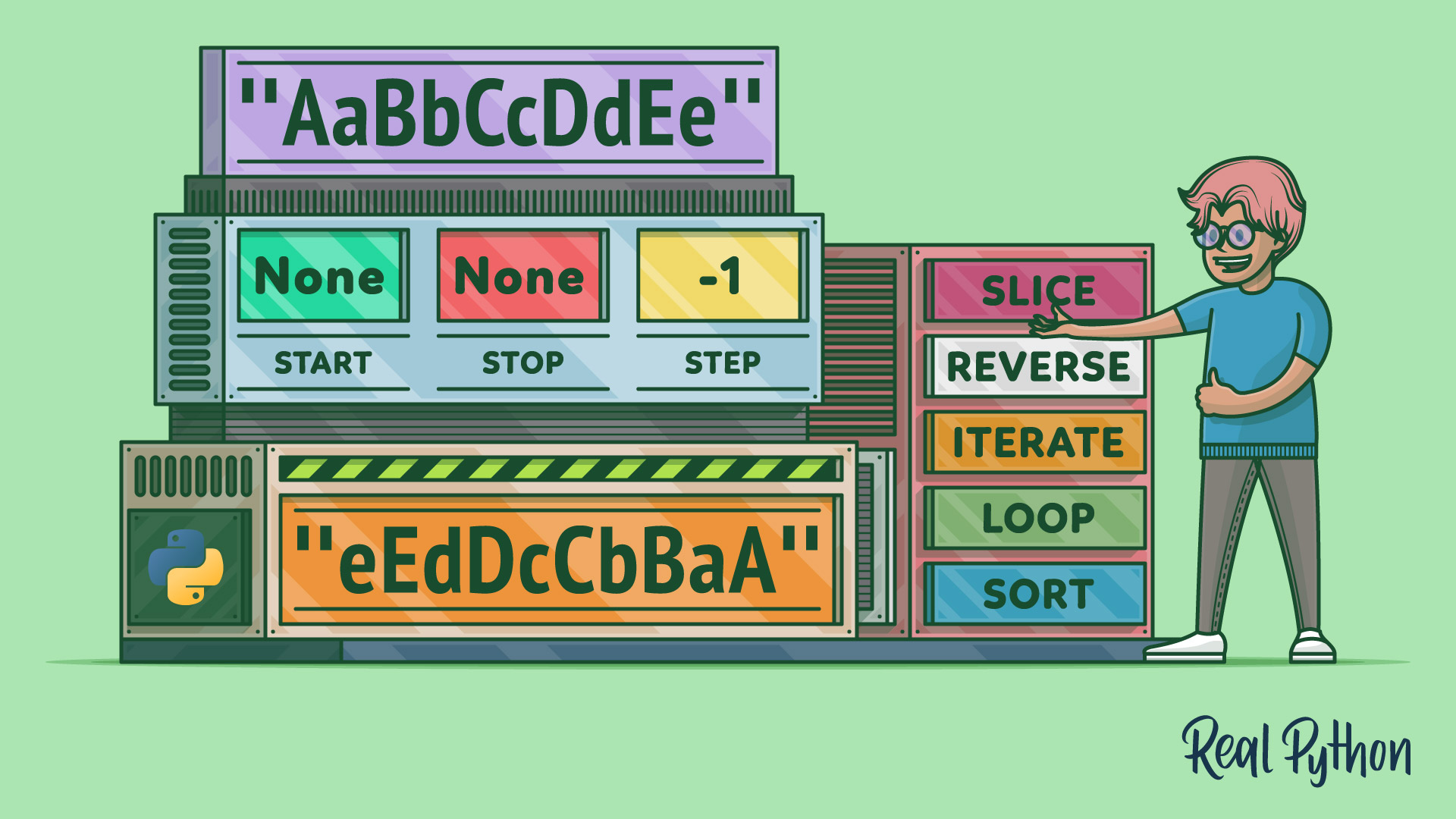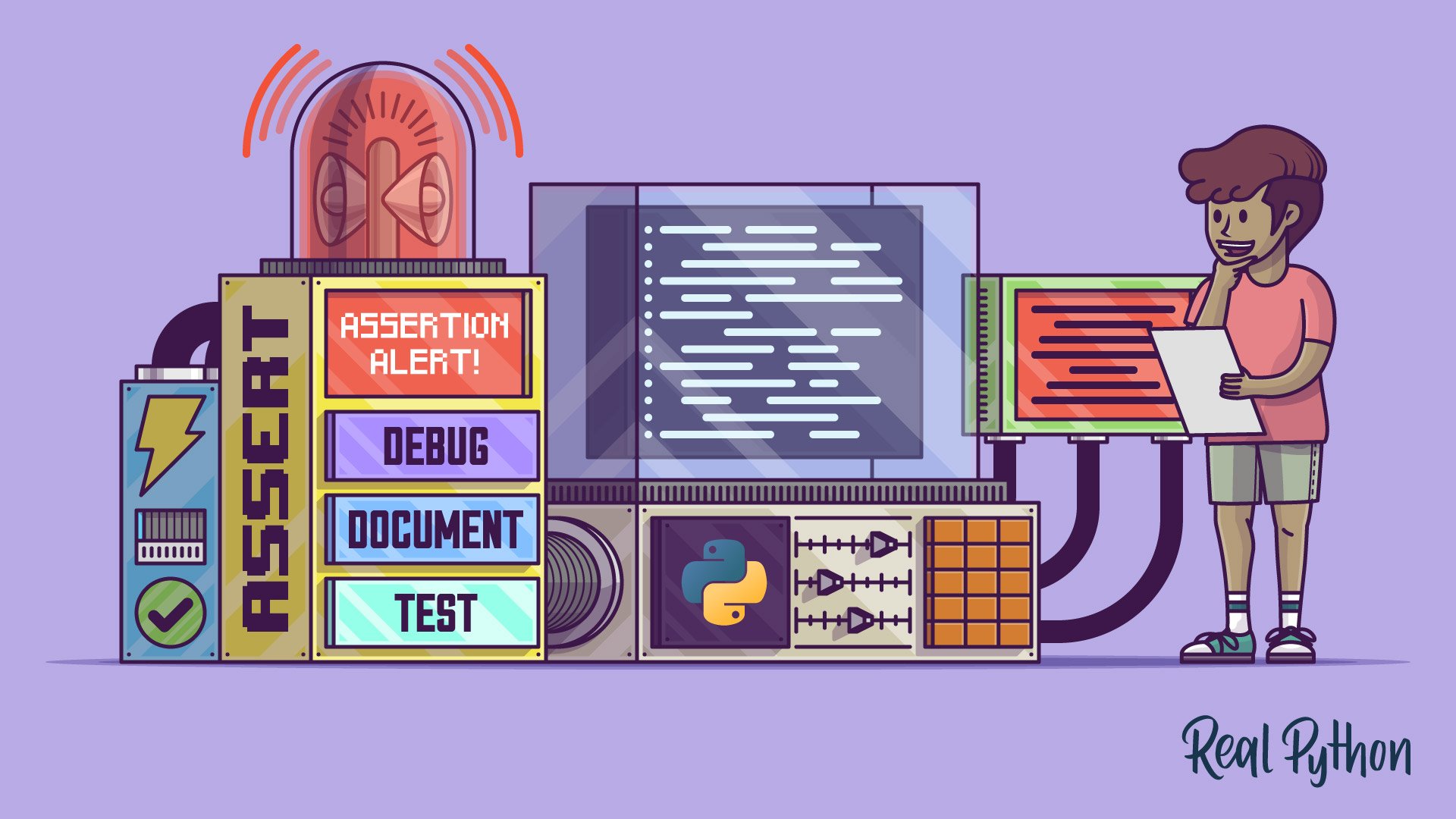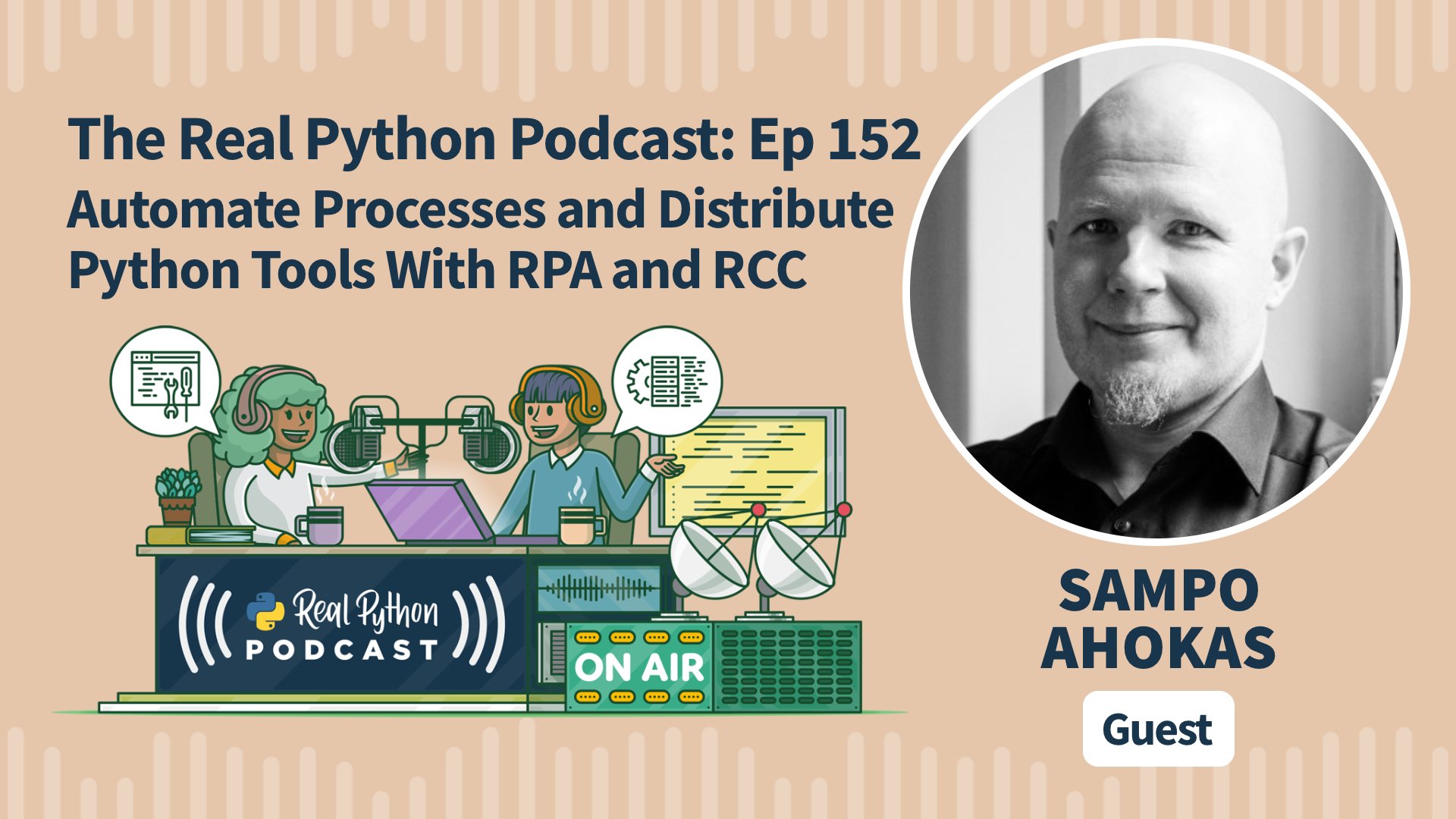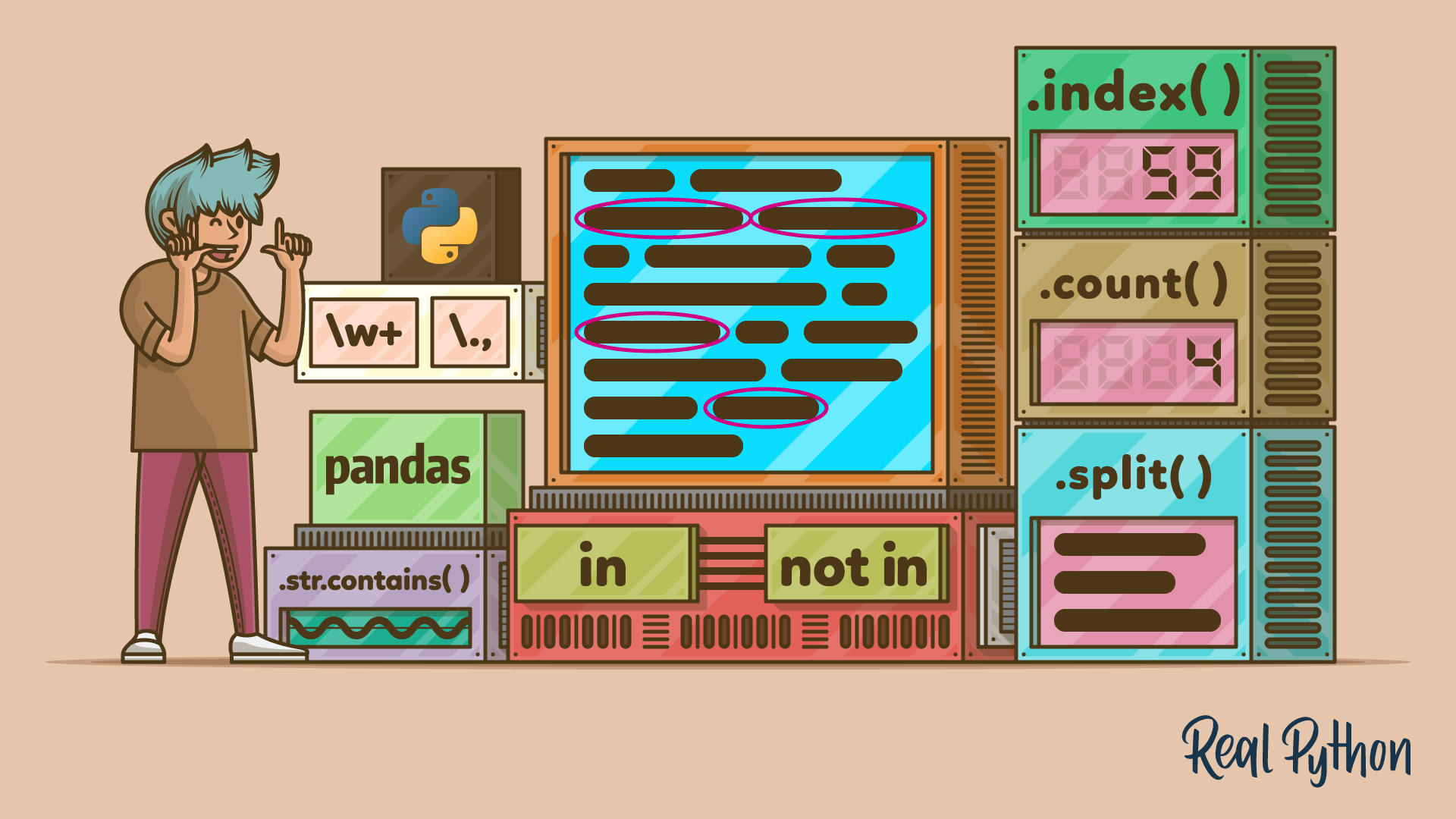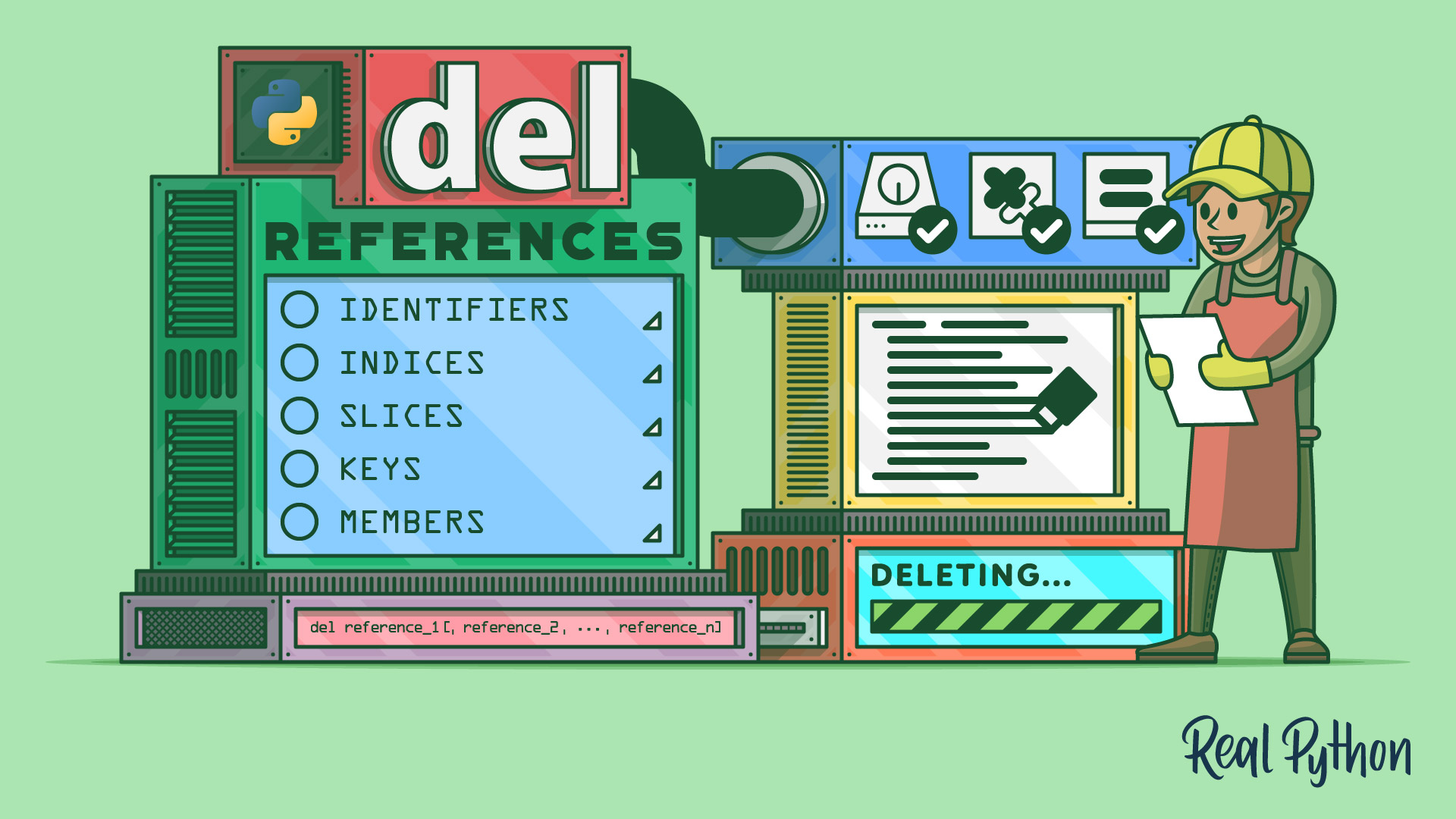Python Best Practices for More Pythonic Code
Writing idiomatic Python means learning patterns that make your code readable, maintainable, and efficient. Master techniques for structuring functions, naming variables, handling errors, and organizing modules. Discover what makes code “Pythonic” and how to apply conventions that experienced developers recognize and trust.
Free Bonus: Python Cheat Sheet
Get a Python Cheat Sheet (PDF) and learn the basics of Python 3, like working with data types, dictionaries, lists, and Python functions:
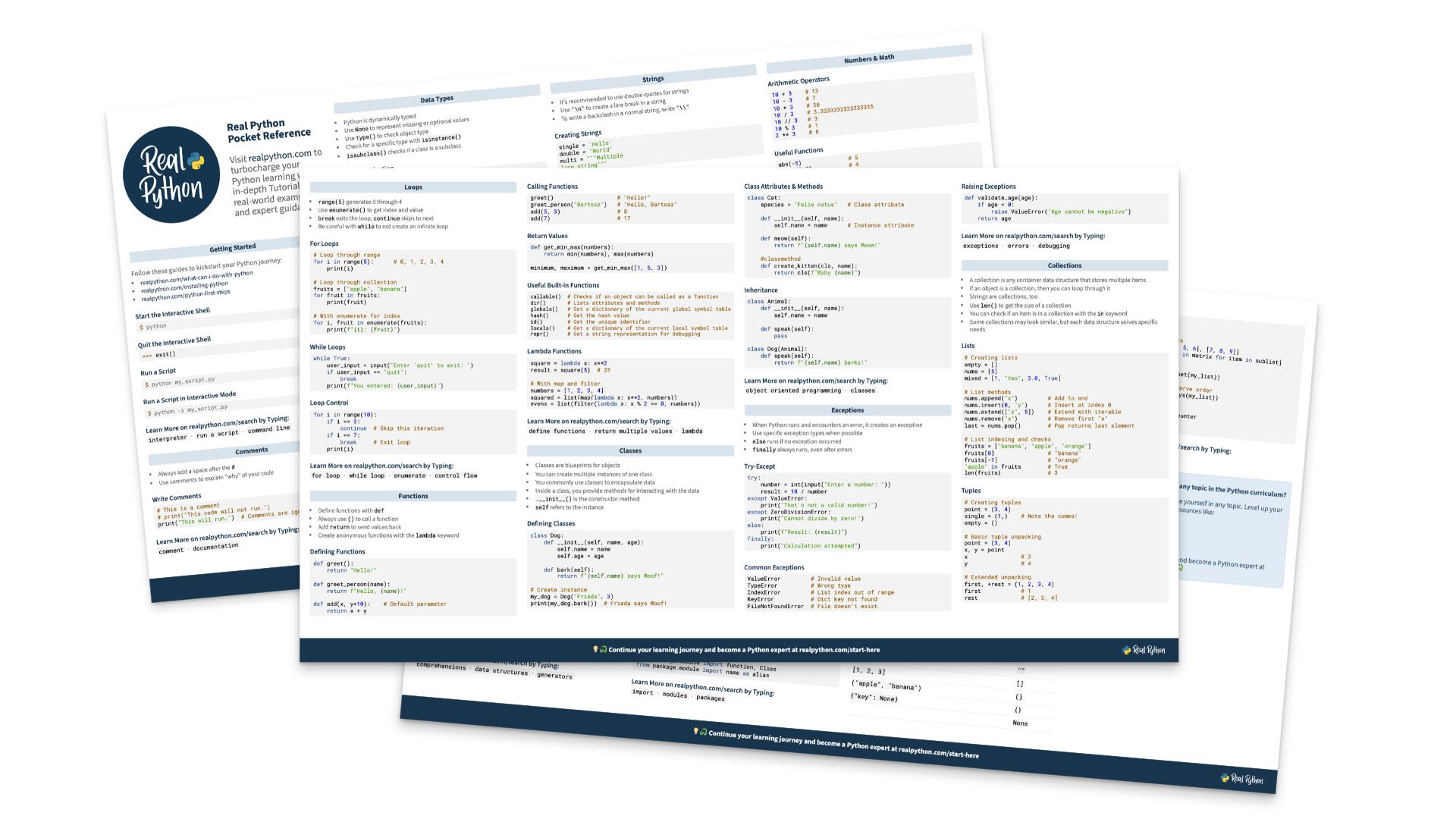
Level up your skills with code quality tools, design patterns, and testing strategies that ship production-ready software. Follow guidelines for documentation, security, and performance. Apply best practices to real projects and build habits that separate professional Python code from scripts that just work.
Browse all resources below, or commit to a guided Learning Path with progress tracking:
Learning Path
Write More Pythonic Code
15 Resources ⋅ Skills: Zen of Python, PEP 8 Standards, Application Layouts, Duck Typing, Type Checking, Type Hints, Code Documentation, MkDocs, Clean Code, Maintainable Code
Pythonic code follows Python’s philosophy of readability and simplicity. It uses built-in features like list comprehensions, context managers, and iterators instead of patterns from other languages. Code that is Pythonic feels natural to experienced Python developers.
Use clear variable names, follow PEP 8 style guidelines, and keep functions short and focused. Write docstrings, avoid deep nesting, and use whitespace to separate logical blocks. Prefer explicit code over clever tricks.
Follow PEP 8 for formatting, use 4 spaces for indentation, and name functions with snake_case. Limit lines to 79 characters, use docstrings for modules and functions, and organize imports in standard order. Apply type hints where they add clarity.
Separate code into modules by responsibility, use a src/ or package directory for your code, and add tests in a parallel structure. Include a README.md, requirements.txt or pyproject.toml, and a .gitignore. Keep configuration separate from code.
Use linters like ruff or pylint to catch errors, black or ruff format for consistent formatting, and mypy for type checking. Add pytest for testing, coverage.py for test coverage, and pre-commit hooks to enforce standards.




